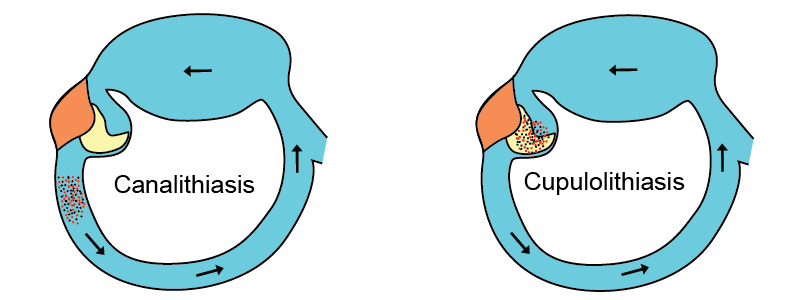


JOHN LI, M.D.
OTOLOGY NEUROTOLOGY RESOURCES
210 Jupiter Lakes Blvd #5105
Jupiter, FL 33458
Phone: (561)-748-4445
Fax: (561)-748-4449
Email: Dr-Li@Dr-Li.net
BPPV Canalith Repositioning The 360 Maneuver & Repositioning Chair Surgery for BPPV Posterior Canal Occlusion
Benign Paroxysmal Positional Vertigo
What is Benign paroxysmal positional vertigo?
Benign Positional Vertigo, Positional Vertigo, BPPV or BPV are the many names for a condition that troubles many patients. BPPV is a type of dizziness caused by abnormal reaction of the balance organ to certain head movements. They are brought on by placing the affected ear downward. In many cases any head movement will aggravate the symptoms. Patients get dizzy looking up, turning suddenly and rolling over in bed.

What causes it?
In simple conceptual terms, there are particles (some call them crystals) that occur normally in the inner ear. When these particles are displaced into the semicircular canals, they can stimulate the balance nerve inappropriately. When the head is placed in certain positions, a severe spinning sensation is produced. Although the spinning sensation usually lasts about 20 seconds, it is often severe and can produce unsteadiness and nausea which may last several hours.
How is it diagnosed?
It is important to realize that the diagnosis of the cause of vertigo can be most difficult. After a thorough history and physical, many tests may need to be done to differentiate the various types of vertigo. These tests range from blood tests to tests of inner ear function. However, the diagnosis of BPPV is relatively easy. When BPPV is triggered, there is an involuntary movement of the eyes called nystagmus which occurs. To make the diagnosis, the patient's head is placed into certain positions and the eye movements are observed and/or recorded with an electronic monitor (VNG).
How is it treated?
- Watch and Wait. (The condition may resolve on its own after weeks, months or years.) This is not generally recommended now since the patient must unnecessarily endure vertigo that could otherwise be easily treated.
- Exercises and Physical therapy. This is also not generally recommended. Certain balance exercises may be helpful. Improvement occurs slowly over six month or more. The exercises themselves may create much vertigo and nausea.
- "The Canalith Repositioning Procedure (CRP)". This is a non-surgical office procedure in which the offending crystals are repositioned to an area in the inner ear where they won't stimulate the balance nerve. (Generally recommended)
- The "360 Maneuver" is done in the special chair that turns people upside-down. It uses the same concept of standard CRP.
- Surgery. This is usually considered ONLY if the person is severely incapacitated, and all other methods have been exhausted. Depending on certain factors, the balance organ can be either saved or destroyed or partially disabled. There may be risk of some hearing loss with this procedure.
Is the canalith repositioning procedure is a safe and effective procedure?
Yes! It is nonsurgical, painless and has few if any side effects. In our experience 90% - 97% of patients experience relief of symptoms. Many are "cured" with one treatment session. Others need more than one "sweep" to clear the particles out of their inner ear systems. Sometimes patients may experience mild transient vertigo for a few days afterwards.
How is it done?
During the procedure, the misplaced canalith particles are guided out of the "bad" location using gravity to an area where they do not bother any nerves . This is done by placing the head in a sequence of positions that sweep the particles from the posterior semicircular canal to the vestibule (central part of the inner ear) where the particles are rendered harmless. As an analogy, imagine that the particles are a bunch of bowling balls that accidently got in the front seat of a car and are rolling around, hitting the gas pedal and brakes intermittently while you are trying to drive. This could be quite disconcerting with the sudden stop and go when you are least expecting it. One way of getting the bowling balls back into the back seat would be to roll the car upside down 360 degrees, from its nose over onto its roof, and then back on its wheels. This would allow the bowling balls to roll over the front windshield, to the headliner of the roof, and then into the back seat where it belongs. (where there are not pedals to crash into and jolt the car around.) This procedure is often done under VNG guidance to ensure the procedure is being done at the appropriate pace. The procedure usually takes about 10-20 minutes. 95% cure is usually obtained as an end result although some patients need to be treated more than once.
Related Pages
BPPV Canalith Repositioning The 360 Maneuver & Repositioning Chair Surgery for BPPV Posterior Canal Occlusion
External Articles, authored by Dr. Li in E-Medicine Online and Medscape
Medscape: BPPV Medscape: BPPV Clinical Presentation ENT Today: BPPV Diagnosis and Treatment